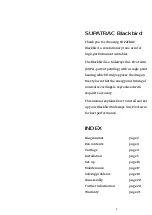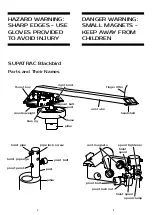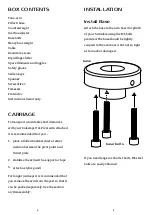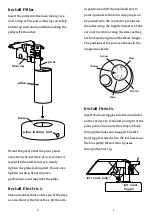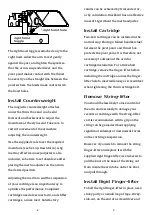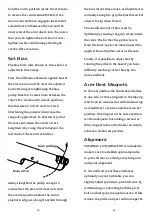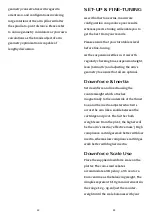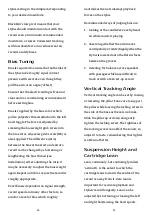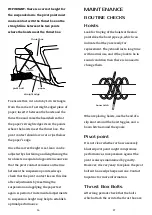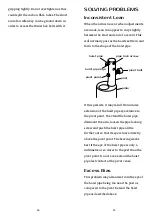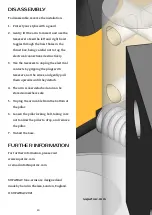
geometry-conservative with regard to
orientaion, and configurations involving
large rotations of the arm pillar will alter
the spindle-to-pivot distance. Please refer
to online geometry calculators or your own
calculations as the broad subject of arm
geometry optimisation is capable of
lengthy discussion.
12
SET-UP & FINE-TUNING
As with other tone arms, inaccurate
configuration can produce poor results,
whereas precise tuning will enable you to
get the best from your records.
Please ensure that your turntable is level
before fine-tuning.
As the suspension settles in, it is worth
regularly checking bias, suspension height,
lean (‘azimuth’) and adjusting the arm’s
geometry to ensure that all are optimal.
Downforce & Inertia
Set downforce and inertia using the
counterweight which attaches
magnetically to the underside of the thrust
box, and the inertia adjuster which sits
across the arm like a saddle between the
cartridge and pivot. The further both
weights are from the pivot, the higher will
be the arm’s inertia (‘effective mass’). High
compliance cartridges work better with low
inertia, whereas low compliance cartridges
work better with higher inertia.
Downforce Scale Use
Place the supplied downforce scale on the
platter. The coin-sized rebates
accommodate a UK penny, a US cent or a
Euro centime as the balancing weight. The
dimples represent 1/10 gram increments in
the range 1.2g - 4g. Adjust the counter-
weight until the scale balances with your
13


